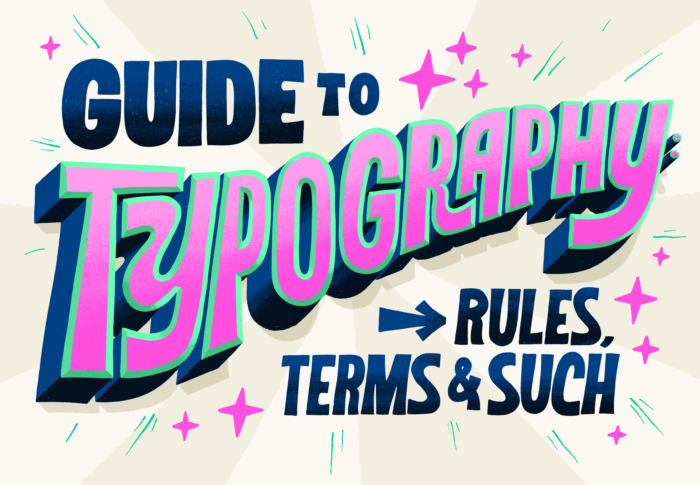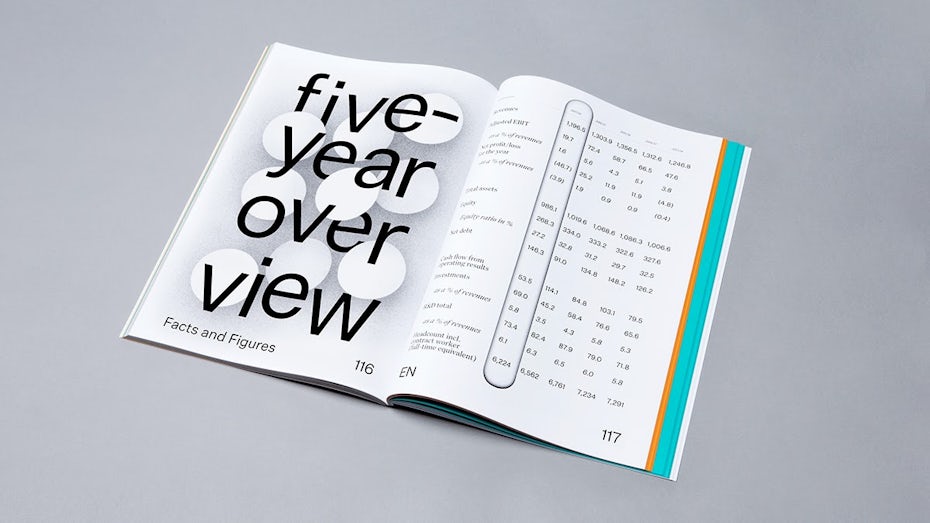
Typography design is everywhere. Do you ever notice the line spacing on the list of ingredients on the back of a crackers package? Or the shape of the numbers on a price tag or even the weights of the letters (a.k.a how thick or thin they are) on street name signs? These may not be your go-to inspirational sources, but they’re an everyday part of life.

In fact, we’re constantly surrounded by letters, everywhere we look. All these sources offer us different perspectives and insights, and show us the endless ways typography can be used.
Before we dive deeper into typography design, let’s take a look at what typography is, and where it came from.
What is typography design? In short, typography design is the art of arranging a message in a readable and aesthetically pleasing composition. It’s an integral element of design. Typography doesn’t ask the designer to draw their own letterforms, but to instead work with typefaces that already exist. This process requires the designer to go through a series of decisions like selecting the proper typeface, choosing the point size, adjusting kerning and line spacing and coming up with a layout that makes sense.
This can be done quickly and easily using laptops, computers and even phones. Thanks to technology, typography and its rules are being challenged each day by new generations of designers who are envisioning letters in ways we couldn’t have imagined just a few years ago.

Keeping it simple with big and bold typography is always a good choice.

If we look at the evolution of typography and all the tools and techniques used so far, we will notice an ongoing battle between the hand crafted and the machine made, between the organic and the geometric. Today, radically separating the two worlds, as well as harmoniously merging them, gives birth to new and unusual results, fueling a never ending cycle of typographic exploration.
There are some basic rules and design terms you need to know before you dive into typography. Here are the most important ones:
Letters come in many many different shapes and styles. Categorizing them can be challenging as there are many factors to take into consideration: their looks, the inspiration for them, the era they appeared in and their usage. For the sake of simplicity, we often refer to three major style categories and then split those into smaller ones.
The first serif typefaces were inspired by traditional calligraphy, and are called Humanist or Old Style. This style is characterized by smooth and rounded forms and slight weight variations.

Around the mid 18th century a new type of serif emerged, which we now call Transitional. This style marks the transition between the Humanist and Modern styles, so it combines a little of both styles’ characteristics.
